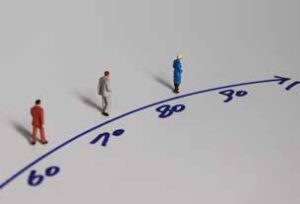 Introduction & Objectives
Introduction & Objectives
The personal and societal burdens imposed by rheumatoid arthritis (RA) in terms of premature mortality and high medical expenditures is high. With advancements in treatment in recent decades, mortality has decreased, while medical expenditures have increased. Investigators have conventionally used the standardized mortality rate to estimate the disease impact on patients, but Chiu et al. believe the impact of RA would be more easily understood by lay people if we could inform them of the life years lost due to the disease.
This study was undertaken to estimate the cumulative incidence rate of RA in the Taiwanese population aged 16–84 years, and the life expectancy, loss of life expectancy and lifetime healthcare expenditures for incident RA in Taiwan after 2003, when biologics began to be prescribed.
Methods
Chiu et al. obtained all claims data from 1999–2016 from the National Health Insurance program of Taiwan and validated the data against the Catastrophic Illnesses Registry to establish the study cohort. They estimated the survival function for RA and extrapolated to lifetime using a rolling-over algorithm. For every RA case, they simulated sex-, age- and calendar year-matched referents from vital statistics and estimated their life expectancy. The difference between the life expectancy of the referent and the life expectancy of the RA patient was the loss of life expectancy for the RA patient.
Average monthly healthcare expenditures were multiplied by the corresponding survival rates and summed up throughout the lifetime to calculate the lifetime healthcare expenditures.
Results
A total of 29,352 new RA cases were identified from 2003–2016. There was a decreasing trend in cumulative incidence rate in those aged 16–84 for both sexes. Mean life expectancy after diagnosis of RA was 26.3 years, and mean lifetime cost was $72,953. RA patients had a mean loss of life expectancy of 4.97 years.
Women with RA survived one to two years longer than men with RA of the same age, which resulted in higher lifetime healthcare expenditures for women. Because the life expectancy for women in Taiwan is six to seven years higher that for men, the loss of life expectancy for women with RA was higher than that for men with RA.
Annual healthcare expenditures were similar for both sexes.
Conclusion
These findings indicate that since biologics became available, RA patients have lived longer and have higher lifetime healthcare expenditures, which should be monitored and evaluated for cost effectiveness.
Refer to the full study for all source material.
